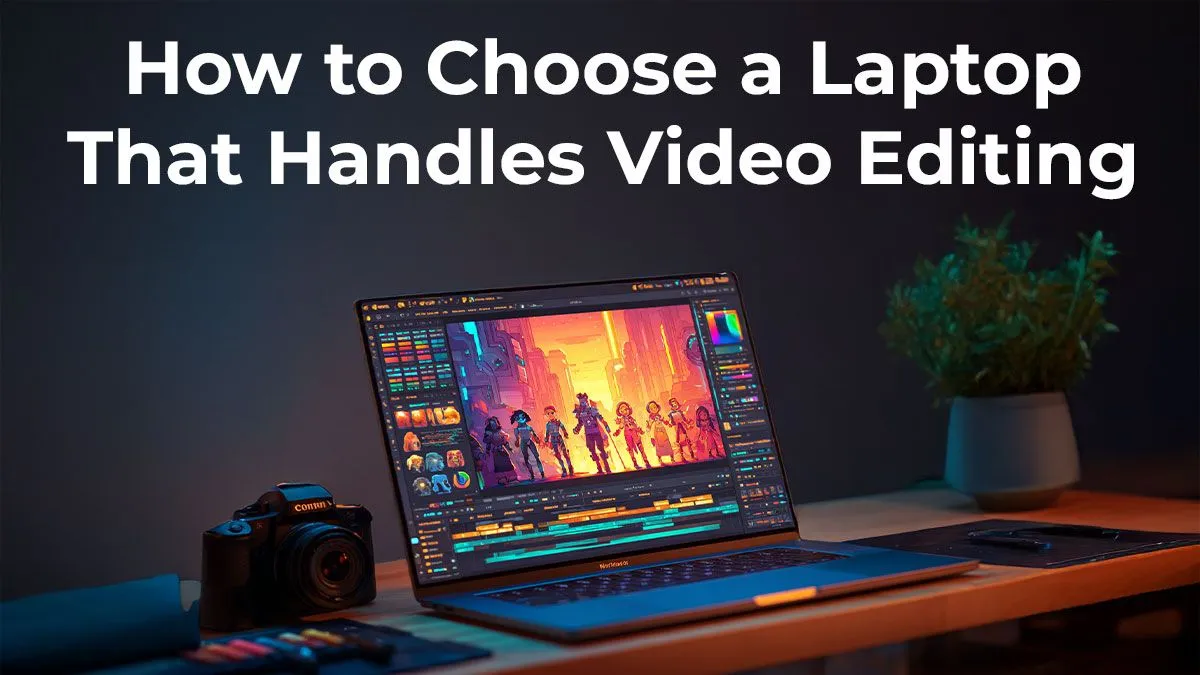
Boost Productivity with Compact Power
🚀 Discover how Mini PCs can supercharge your video editing workflow with unmatched portability and power. 🎥 Learn the key benefits and tips to optimize performance for seamless editing.
🚀 Dive into top-tier laptops engineered for video editing. Unleash creativity with machines built for high-demand tasks! 💻

If you’ve ever tried editing 4K footage on a budget laptop, you already know—it's not just slow... it’s painful. Dropped frames, stutters, and hour-long render times can kill your creative flow. Whether you’re a YouTube creator, wedding videographer, or TikTok wizard, choosing the best laptops for video editing in South Africa means knowing which specs matter and which are fluff. Let’s break it down. 🎬⚡
When evaluating laptops for video editing, you want:
Modern Intel-powered laptops handle software like Premiere Pro and DaVinci Resolve exceptionally well. Some Intel gaming laptops even outperform desktops when paired with fast NVMe drives and RTX GPUs.
GPU-accelerated encoding slashes render times and lets you preview effects in real time. Whether you’re keying green screen footage or doing multi-cam edits, a solid GPU takes the pressure off your CPU.
Many editors are leaning into GeForce RTX laptops not for gaming—but for CUDA cores and NVENC encoding. Check out these RTX-enabled laptops that pair well with Adobe and Blender’s GPU pipelines.
Upgrading from 16GB to 32GB RAM can halve export times in some editing suites. It also reduces timeline lag.
Don’t sleep on Ryzen. The newer Zen 3 and Zen 4 mobile CPUs offer beastly multicore performance, often outperforming Intel in long, sustained render sessions.
Many Ryzen laptops also come with better battery life, which is great if you're editing while travelling. Just double-check the screen brightness and AdobeRGB % if colour grading matters to you.
What’s the point of perfecting skin tones if your display’s off? Look for IPS or OLED panels with at least 100% sRGB and 300+ nits brightness.
Bonus if your editing suite supports HDR… and your screen does too.
Footage eats space. SSDs make a difference not just in boot times, but in how quickly your clips load, preview, and scrub. Aim for 1TB minimum, and if possible, use an external NVMe for scratch disks.
Some newer RTX laptops even ship with dual M.2 slots—perfect for editing on one drive and exporting to another.
Choosing the best laptops for video editing isn’t about hype… it’s about sustained performance, smart thermals, and displays that let you colour grade confidently.
Don’t buy a laptop just because your favourite editor uses it. Buy one that fits your workflow.
Edit Like a Pro, Anywhere Render faster, edit smoother, and colour-correct with confidence… Shop now at Evetech for performance that leaves lag in the dust.
Look for at least an Intel i7, 16GB RAM, and a dedicated GPU like NVIDIA RTX.
Top choices include Apple, Dell, HP, and ASUS for reliable performance in editing tasks.
Yes! MacBooks offer powerful processors and Retina displays ideal for video editing workflows.
Absolutely—they often come with high-end GPUs and processors suited for creative jobs.
Aim for 16GB minimum; 32GB is optimal for smooth 4K video rendering.
Check the Dell XPS 15 or MacBook Pro M2 for portability without compromising power.
Balance both—opt for a strong CPU like Ryzen 9 and an RTX GPU for peak performance.